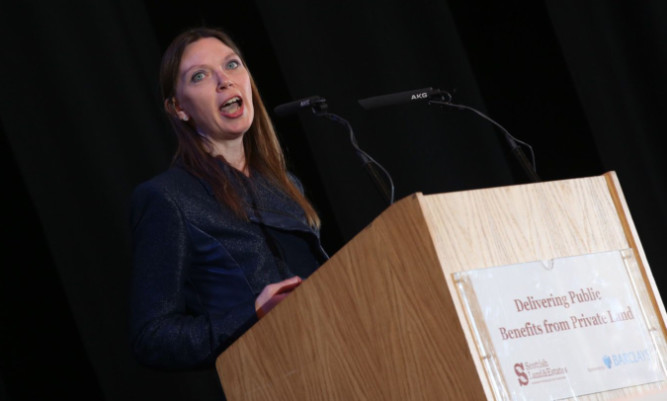It would be fair to call Dr Aileen McLeod’s speech yesterday a landmark event.
Speaking in Edinburgh’s Assembly Rooms to a sell-out audience at a Scottish Land & Estates conference the Minister for the Environment made it very clear that land reform is very much on the Scottish Government’s immediate agenda.
Seeking to calm concerns she said: “This is not an ideological attack on landowners and not about taking their land away. It is about creating a more productive and fairer society.”
There was, however, intense interest as she reiterated the Scottish Government’s target of moving one million acres from private and public ownership to community ownership by 2020, only five short years away.
“This will let many people define their own destinies,” she added.
“The aim is to make the situation of those who live on the land better.
“It is about modernising the legal framework and ensuring that the land delivers public benefits.”
Dr McLeod did, however, admit that although she saw community ownership going from “strength to strength” it was not suitable for all land.
SL&E chairman David Johnstone had already set the scene in a positive tone describing the debate as an “unprecedented opportunity to cut through the rhetoric surrounding land reform”.
He said: “The challenge we face is to break down the stereotype image that is so convenient for those who are critical of the very existence of estates.
“They do not wish to acknowledge what is happening on the ground and what can be achieved in the future.”
“There is compelling evidence right across Scotland to demonstrate the public benefit private landowners deliver.
“It is there for all to see in tourism, energy, housing, conservation and a host of other sectors, many of which provide no commercial return for landowners.”
The thorny issue of human rights was pre-empted by Dr McLeod before she could be tackled on it.
SL&E has already flagged up the likelihood of landowners’ human rights being contravened by new legislation.
This was a possibility, she conceded, but it was a case of balancing the right to own land with the rights of those seeking housing and employment on the land.
“Remember 10% of households own 44% of the wealth and the least wealthy 50% only own 9% of it. That doesn’t reflect the society to which we aspire,” she said.
